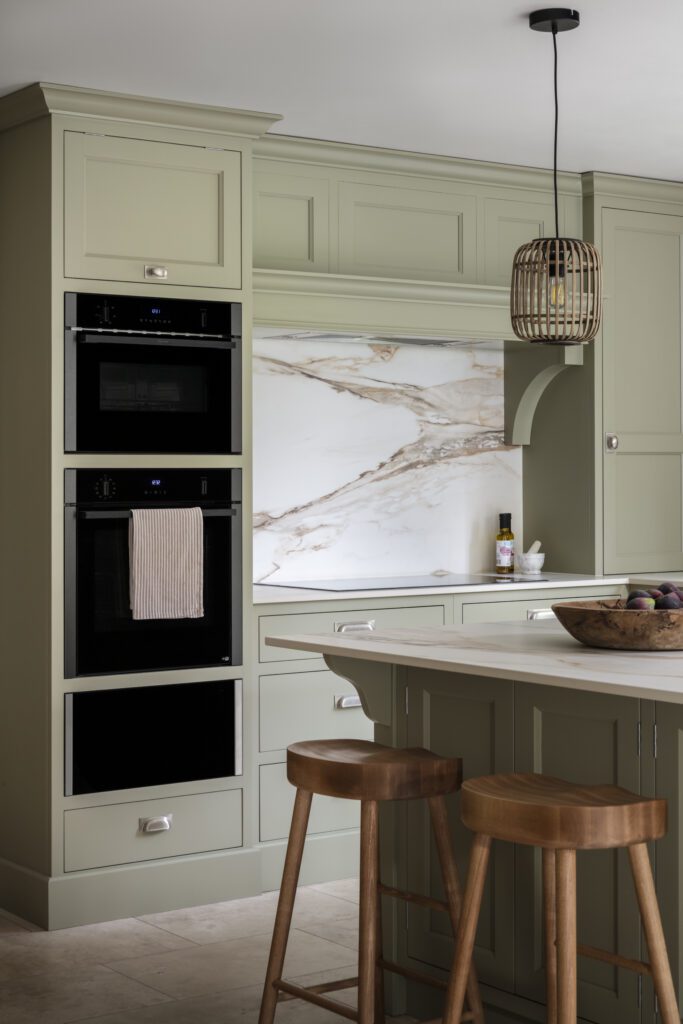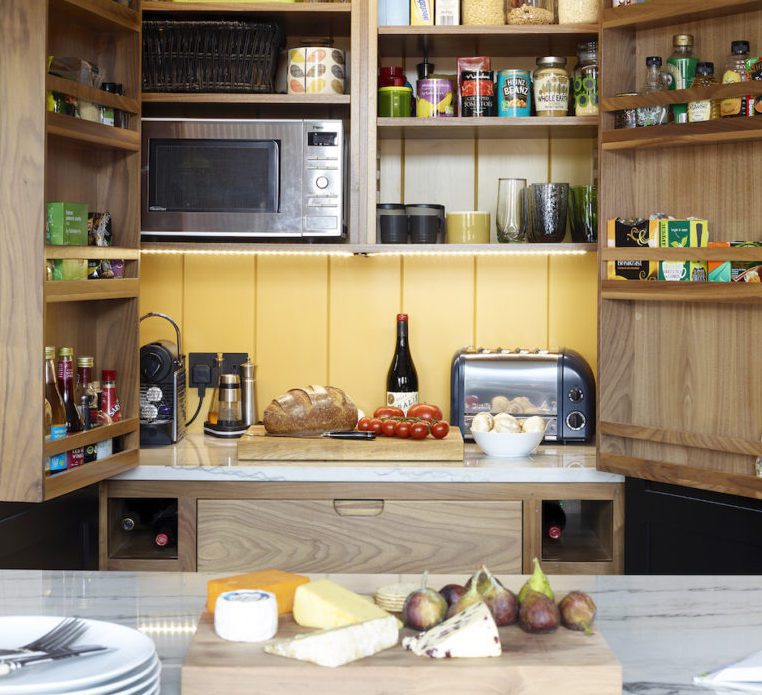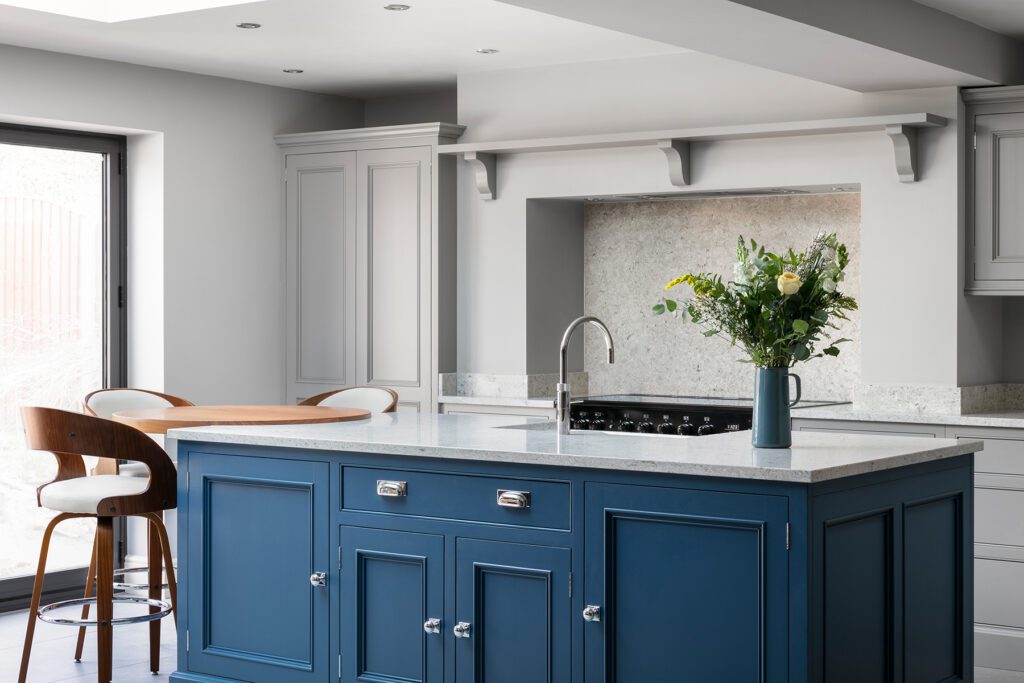A bespoke handmade kitchen is a dream come true for so many. But as you start looking through the thousands of kitchen design options, it’s easy to get overwhelmed!
Here are some insider tips to help you realise your vision and make it a reality.
Consider the existing space
In a modern home, you may be working with what’s essentially a blank slate, but there will always be a couple of features you’ll need to factor in. Start by mapping out windows and doors. Then if there’s any outdoor space, consider how your design could make the most out of it. This could result in a kitchen sink that overlooks the garden, or french windows in clear view of a seating area.
In older homes, architectural features such as sloping ceilings or different floor levels will also affect your plans. So make sure you consider these in the early stages.
And let’s not forget the size of the space. In a smaller space, we’d recommend forgoing some of the less essential appliances or excessive cabinetry to prevent it from feeling cramped.
Play around with popular kitchen designs and layouts
In certain spaces, the type of layout can be decided for you – or you’ll have the privilege of choosing for yourself! These are the most popular and our advice on using them to their full potential:
One wall kitchen
This layout is best suited to very narrow spaces. You’ll need to think vertical and build upwards to make the most of the space. Adapt the work triangle by having the refrigerator on one end, oven and hob in the middle, and then the sink.
Galley kitchen
This kitchen design is similar to one-wall, but with cabinets on both sides. To avoid any accidents, keep the work areas along one of the walls.
L-shaped kitchen
Cabinets and workspaces will run along two connecting walls at a right angle. Make the most of the corner space with a walk-in corner cupboard.
U-shaped kitchen
These kitchens are typically more spacious. All the same, take care not to overload on cabinets and appliances. Keep the main fixtures on one or two walls.
Island kitchen
Double up the function of your island by using it for socialising and food preparation. Meanwhile, you can install appliances and storage underneath.
Envision your lifestyle
Before you let your style preferences take the lead, it’s important to remember that in a kitchen, functionality is king. And exactly how you’d like it to function is quite a personal thing, so reflect on how you use your current kitchen and how the future could look.
Are you an enthusiastic home chef who labours over elaborate meals for hours? Then perhaps worktop space needs prioritising. Do you like peace and quiet while you cook? Maybe having a kitchen table or breakfast bar in the centre of the room isn’t the best idea. Or you firmly believe the kitchen is the heart of the home - in which case, you’ll want to consider homework space for the kids, or how you’ll entertain.
The work triangle
This kitchen design concept dates back around 100 years – and for good reason. It’s another easy way to ensure optimal functionality. According to the work triangle, there should be a clear path between the stovetop, kitchen sink and refrigerator so the cook can comfortably move between these key areas.
Ideally, each triangle leg should be between around one and three metres in length, with no appliances or cabinetry disrupting the connecting areas.
Get in touch with Hill Farm Furniture today
For more help designing your bespoke Lincolnshire kitchen, don’t hesitate to reach out. Our team takes great pleasure in supporting you through every stage.


